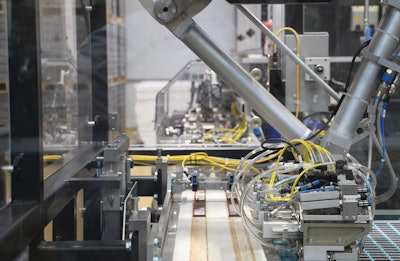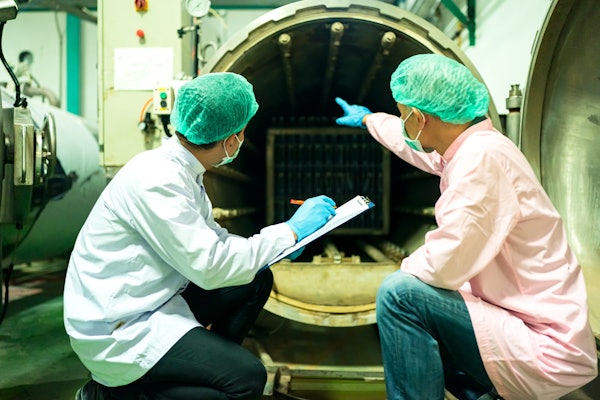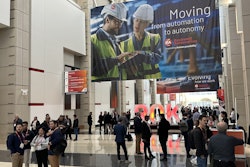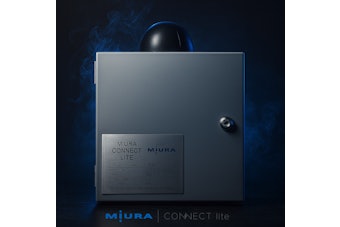Switzerland’s Chocolat Frey AG, based in Buchs, Aargau, is a leading manufacturer of chocolates. The independent subsidiary of the Migros cooperative society has recently expanded production of Neapolitans, the little chocolates that are in strong demand internationally. Together with project partner Loesch Verpackungstechnik GmbH, Frey implemented a space-saving and efficient packaging solution for the “petit chocolate Suisse.”
Most of Chocolat Frey’s production is for Migros cooperatives, to which Frey has belonged since 1950, for sale in their retail outlets. Frey also supplies to catering businesses, bulk customers, and downstream industries. In 2014, more than 43,000 tons of chocolate, confectionery, semi-finished products, and chewing gum have rolled off the production line in Buchs,” says Manfred Leuenberger, Technology Team Manager. “This allowed us to generate an impressive annual revenue of 404 million Swiss Francs (4,147,535 USD). Of this sum, exports accounted for 138 million Swiss Francs. The foreign market is now our main driver of growth.”
Continuously growing demand has meant Chocolat Frey has had to ramp up production. “Years before we took the decision to invest, our two Neapolitans production lines were already running at maximum capacity,” says Leuenberger. The age of the existing equipment meant that a simple expansion was out of the question. The company opted for a new molding unit with a powerful packaging system, and 2013 was the year they decided to make the investment.
When running flat out, the new molding unit manages up to two tons of chocolate mass an hour. Daily operations are 16 hours long in two shifts. Due to space constraints, Frey required a compact yet powerful packaging system. Loesch Verpackungstechnik met the packaging brief with four twin-lane LRM/2-G-S fold-wrapping machines plus buffer and conveying systems. Key drivers behind the selection of this equipment included the high speed of the packaging machines and the quality of the modular system.
“Other manufacturers were also in a position to offer the overall system performance we required,” says Leuenberger. “For the projected packaging system, however, LoeschPack needed considerably fewer packaging machines and thus less space than its market competitors. It simply offered better value for the money invested.”
Implementation
During the implementation phase, the engineers from Chocolat Frey reviewed the technical details together with the project team from Loesch Verpackungstechnik. “LoeschPack provided many valuable ideas in the course of this development process. The engineers’ great expertise helped to ensure an efficient solution for our production operations,” says Leuenberger.
One particular solution involves feeding the dosed and cooled Neapolitans to the packaging machines. Tobias Heinze, Product Manager at LoeschPack, explains.
“Feeder systems usually operate with conveyors alone. In this specific case of producing a single product, however, we took the decision with the customer to use a solution with counter mold transport. This method of feeding is less prone to faults with small products such as Neapolitans and cheaper to maintain; it also takes up less space overall.”
The Neapolitans leave the molding unit in counter molds and are transported to the packaging system on a dual-rope chain link conveyor. A fully automated system checks each counter mold for completeness and metal contamination, ejecting any items that fail. Special two-axis transfer robots with vacuum cups pick rows of Neapolitans from the counter molds and place them accurately on the feeder of the packaging machines. Each of the four LRM/2-G-S fold-wrapping machines packages up to 1,050 Neapolitans in coated OPP film in this application. The total capacity of the four machines combined with the overall line design makes efficient packaging of the tasty chocolate Neapolitans a simple affair at all times.
If a film tears, a product breaks, or technical problems occur during production, causing the packaging machine to temporarily stop, the counter molds are stacked at a buffer station. “Once the fault has been cleared, the product buffer gradually empties during normal operation of the molding unit. This means we can guarantee our customer maximum system efficiency,” says Heinze. If the molding unit has to be stopped, a second buffer station for empty counter molds comes into play. The buffers, the overall reliability of the packaging machine, and the easy accessibility of all areas for fault clearance make the daily work of the operators a pleasant experience. That, in turn, makes Heinze happy: “The confirmation of user-friendliness, top performance, gentle product transport, and outstanding packaging quality in our production facility fully vindicates our joint development process.”
Secondary packaging
From the packaging system, the wrapped Neapolitans are transported on a conveyor system for further packaging. “There, we pack the goods in various bag sizes, then in cartons, and finally onto pallets. This solution saves us the need for temporary storage and optimises the logistics chain,” says Leuenberger.
Just ten months separated the decision to work with LoeschPack and the commissioning of the system. “Project planning, mechanical engineering, delivery, installation, and start-up all in such a short time is an outstanding achievement,” says Leuenberger with great satisfaction. The smooth-running process was in no small part due to the excellent relationship between the Chocolat Frey and LoeschPack project teams. “Staff in my technical team spent several days at LoeschPack in Altendorf, familiarized themselves with the design of the machinery and, together with LoeschPack’s engineers, shared their deep expertise in the production of Neapolitans,” recalls Leuenberger. As just one example, they provided key input for the specification of the packaging film used at Chocolat Frey, which is produced sustainably and to the highest standards. The two technical teams were also very closely involved in the setup phase and start of production at the plant in Buchs.
The system, representing a total investment of several million euros, was commissioned in late August 2014: “We started off at around 50 per-cent output, and were already at full production by the end of September,” says Heinze. “And if there is ever a problem, we have online access to the system and can provide rapid assistance. When required, we can also offer swift help with diagnostics, maintenance, data analysis or optimization from Altendorf. That saves our customer valuable time,” says Heinze, explaining the internationally tried-and-tested remote access system.
With the high-performance system for producing Neapolitans, Chocolat Frey has the edge in an increasingly competitive global environment. Management is already thinking about doubling production capacity to process two tons of chocolate mass an hour. “The constant cost pressure in the food sector, the market entry of German discounters in Switzerland, high labor costs, and the strong Swiss franc all demand products of outstanding quality and efficient production structures,” sums up Leuenberger. “Here, we have set new standards with our project partners and look to the future with great optimism.”



















